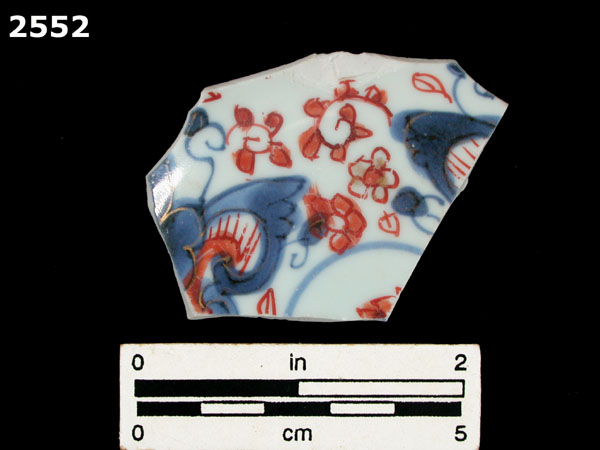View all examples of PORCELAIN, CHINESE IMARI

| Type Name: | PORCELAIN, CHINESE IMARI |
| Type Index: | PORCELAIN |
| Production Origin: | CHINA |
| Date Range: | 1700-1780 |
| Defining Attributes: |
White, thin, highly vitreous paste that is smooth and translucent. Background glaze is white or bluish-white in color, well bonded to the paste, lustrous, and shows little evidence of imperfection. Decorated with underglaze handpainted cobalt blue Chinese designs, combined with overglaze enamel decoration in red, green and gold. Overglaze motifs are most commonly floral elements. |
| Vessel Forms: |
BOWL CUP PLATE SAUCER TEA POT |
| Comments: | Chinese Imari porcelain was made in imitation of Japanese Imari porcelain, which is rarely see in American colonial sites. It’s peak of popularity was between about 1715 and 1735. The overglaze enamel elements are unstable in buried conditions, and are thus often fugitive on archaeological examples. Fugitive elements appear as faint outlines on the surface of sherds, visible only at certain light angles. |
| Published Definitions: | Godden 1979; Mudge 1986; Noel Hume 1970 |